Abstract
A new blood culture instrument, the BACTEC (Johnston Laboratories, Inc., Towson, Md.) NR-660, which utilizes infrared detection of carbon dioxide from microbial metabolism, was compared with the radiometric BACTEC 460 system. There were 1,554 isolates from 18,785 paired aerobic blood cultures. Of these isolates, 1,303 were isolated from the radiometric 6B medium, and 1,259 were isolated from the NR6A medium (P = 0.06). Analysis of the data indicated no significant differences in recovery when any individual species was considered. When organisms were considered as groups, there were no significant detection differences for gram-negative bacilli, yeasts, or anaerobes. For gram-positive cocci in aerobic medium, the BACTEC 460 detected 84.3% of the total isolates, and the BACTEC NR-660 detected 79.7% (P = 0.04). There were 891 isolates from 13,983 paired anaerobic blood cultures. Of these isolates, 725 were recovered from the radiometric 7D BACTEC medium, and 723 were recovered from the NR7A BACTEC medium (P greater than 0.9). In the anaerobic media there was no significant difference in detection of any organism group, including the gram-positive cocci. When the results of the aerobic and anaerobic media were combined, there was equivalence between the two systems for the detection of gram-positive cocci (P greater than 0.2) and other organism groups. When the ability to detect septic episodes was compared, there was no significant difference for any organism group (P = 0.12). For aerobic media, the mean times for detection were 30.5 and 29.5 h for the BACTEC 460 and NR-660, respectively. For anaerobic media, the mean times for detection were 39.8 and 41.6 h for the BACTEC 460 NR-660, respectively. Compared with the BACTEC 460, the BACTEC NR-660 system had a greater ease of operation, faster test cycle, computerized data base, and equally rapid detection of positive cultures.
Full text
PDF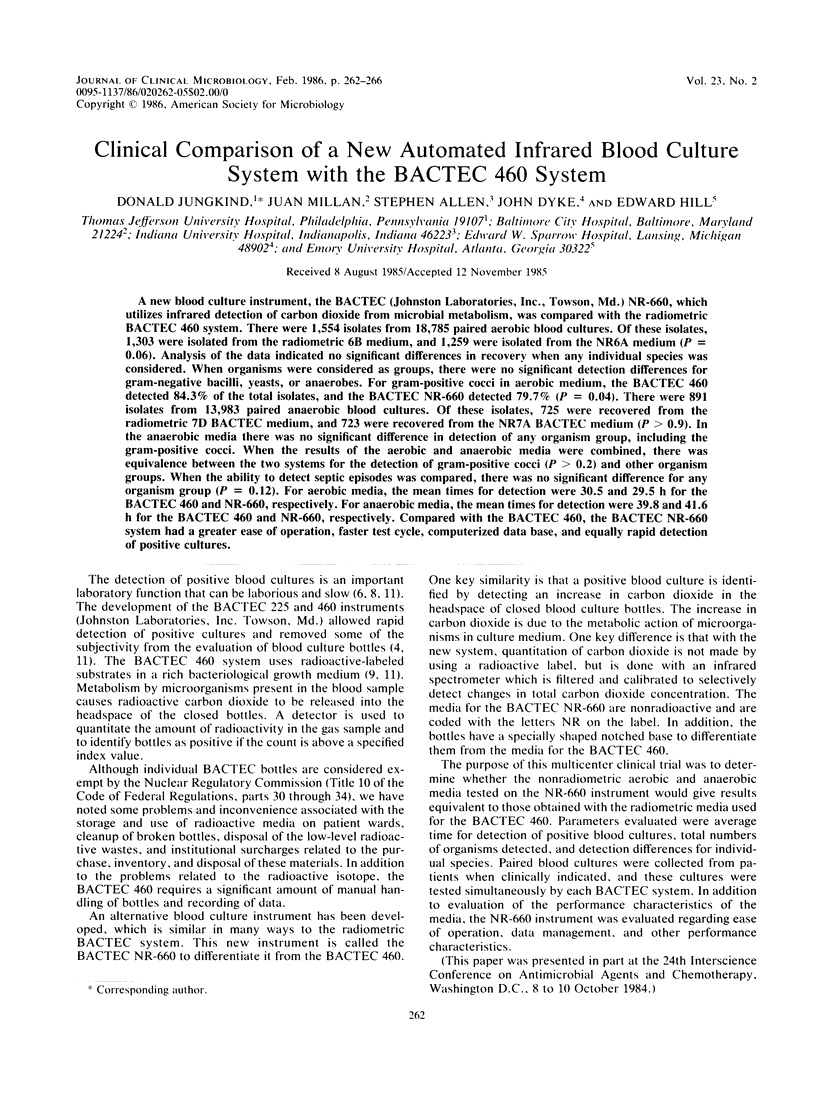
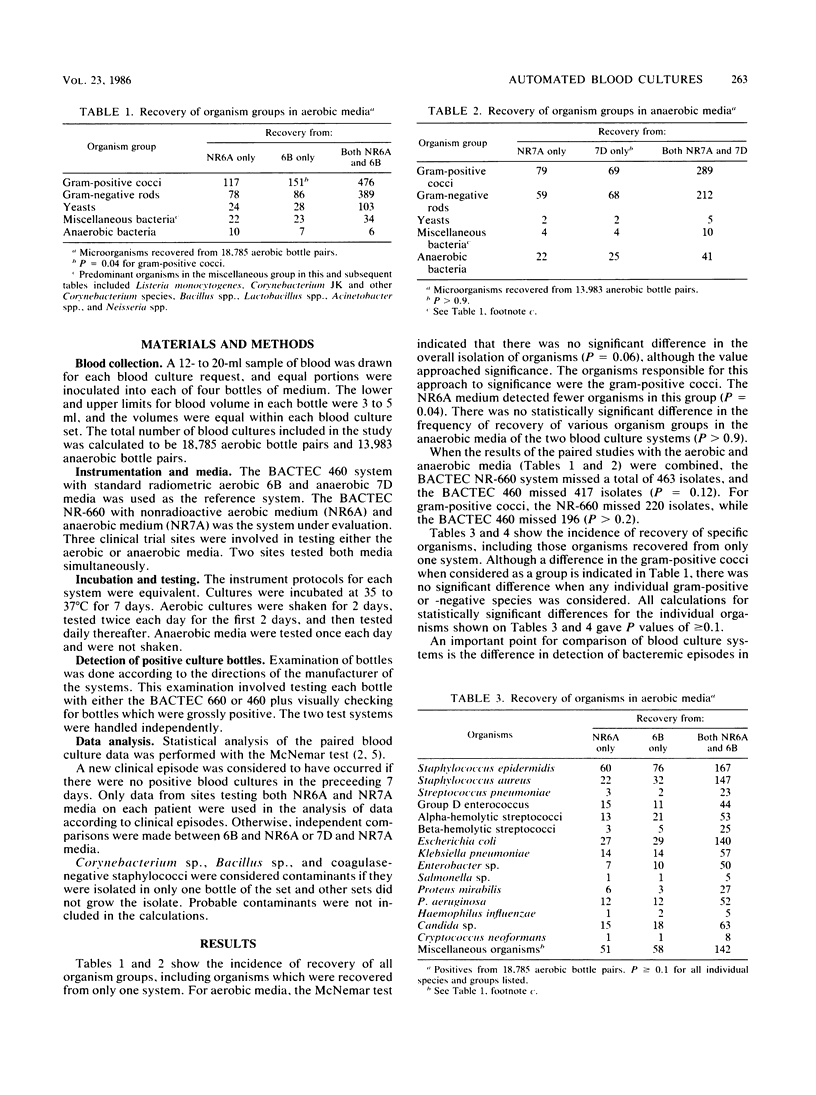
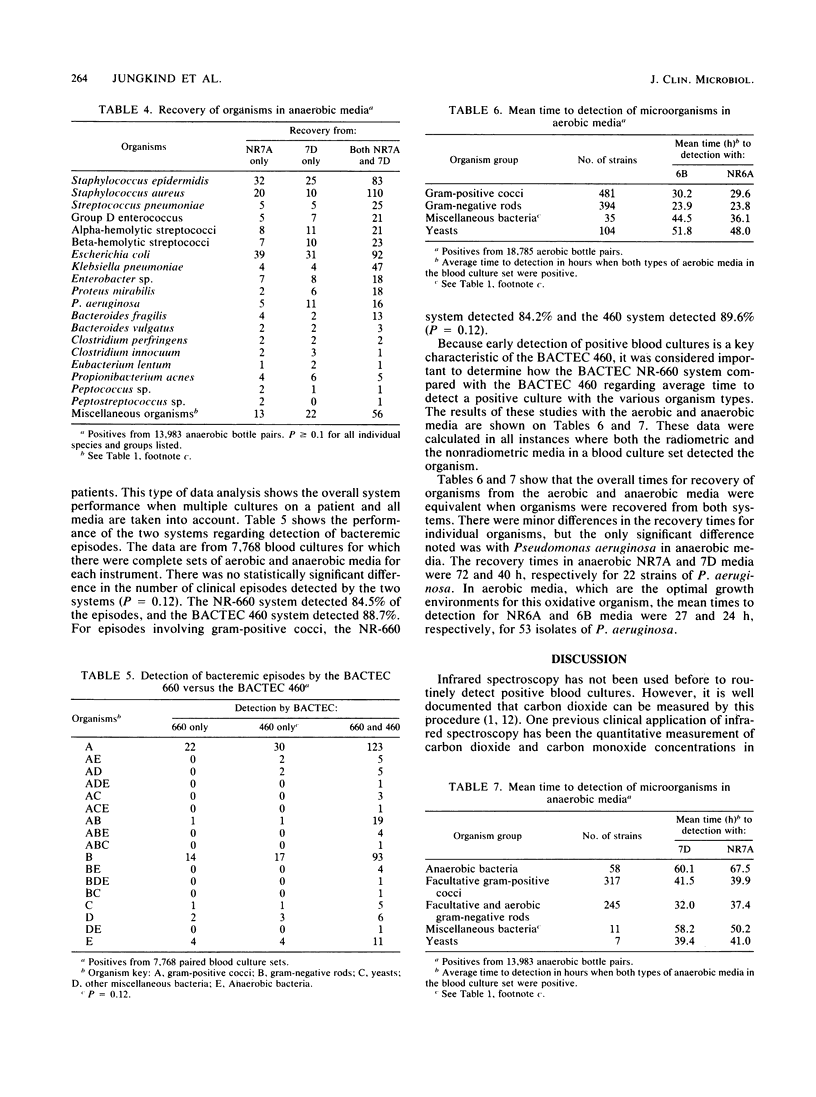
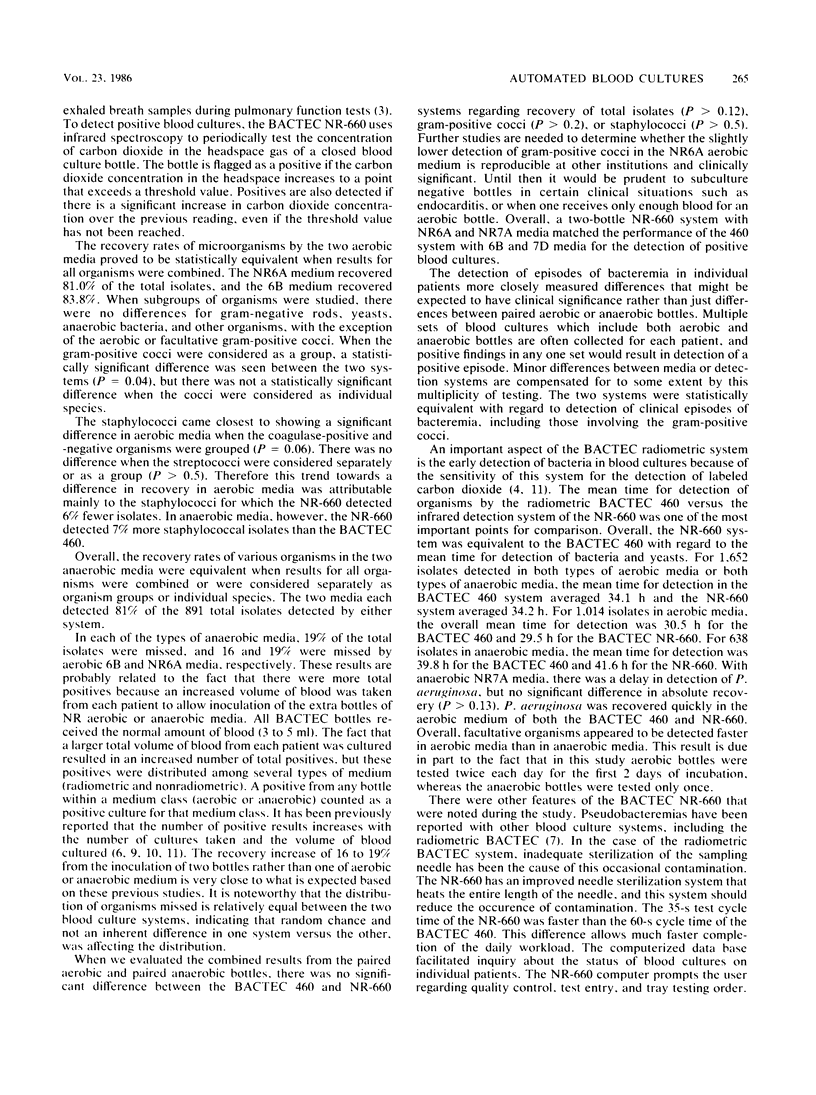
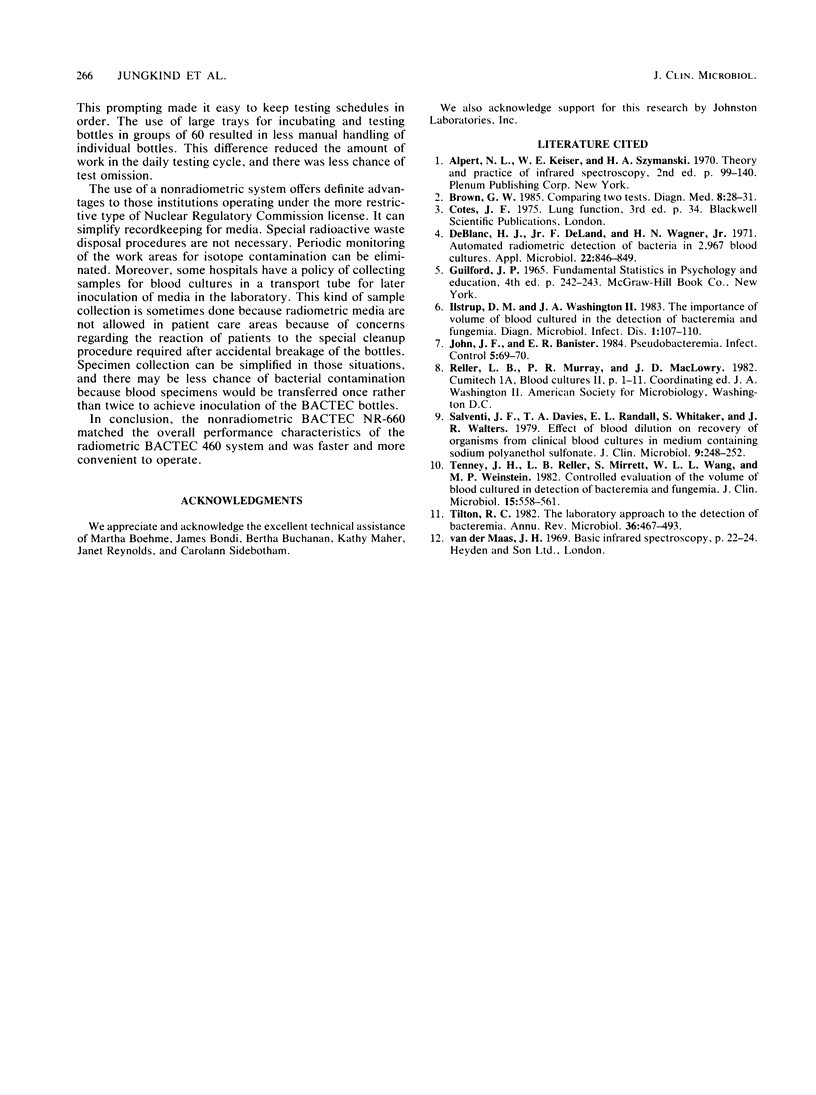
Selected References
These references are in PubMed. This may not be the complete list of references from this article.
- DeBlanc H. J., Jr, DeLand F., Wagner H. N., Jr Automated radiometric detection of bacteria in 2,967 blood cultures. Appl Microbiol. 1971 Nov;22(5):846–849. doi: 10.1128/am.22.5.846-849.1971. [DOI] [PMC free article] [PubMed] [Google Scholar]
- Ilstrup D. M., Washington J. A., 2nd The importance of volume of blood cultured in the detection of bacteremia and fungemia. Diagn Microbiol Infect Dis. 1983 Jun;1(2):107–110. doi: 10.1016/0732-8893(83)90039-1. [DOI] [PubMed] [Google Scholar]
- John J. F., Jr, Bannister E. R. Pseudobacteremia. Infect Control. 1984 Feb;5(2):69–70. doi: 10.1017/s0195941700058963. [DOI] [PubMed] [Google Scholar]
- Salventi J. F., Davies T. A., Randall E. L., Whitaker S., Waters J. R. Effect of blood dilution on recovery of organisms from clinical blood cultures in medium containing sodium polyanethol sulfonate. J Clin Microbiol. 1979 Feb;9(2):248–252. doi: 10.1128/jcm.9.2.248-252.1979. [DOI] [PMC free article] [PubMed] [Google Scholar]
- Tenney J. H., Reller L. B., Mirrett S., Wang W. L., Weinstein M. P. Controlled evaluation of the volume of blood cultured in detection of bacteremia and fungemia. J Clin Microbiol. 1982 Apr;15(4):558–561. doi: 10.1128/jcm.15.4.558-561.1982. [DOI] [PMC free article] [PubMed] [Google Scholar]
- Tilton R. C. The laboratory approach to the detection of bacteremia. Annu Rev Microbiol. 1982;36:467–493. doi: 10.1146/annurev.mi.36.100182.002343. [DOI] [PubMed] [Google Scholar]


